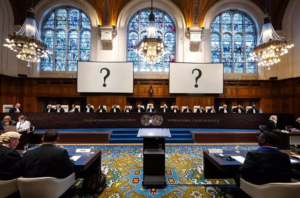Executive Summary
This Rapid Response Analysis from the Public International Law & Policy Group and Covington & Burling provides an overview of the long-standing boundary dispute between Venezuela and Guyana relating to the Essequibo region, broadly recognized as part of the territory of Guyana, to contextualize recent developments over the disputed territory.
On December 3, 2023, Venezuela held a referendum in which it asked the Venezuelan people for their views on matters related to the status of the disputed Essequibo region. Among other questions, the referendum asked voters whether they agreed with the creation of an Essequibo “state” that would be eventually incorporated into Venezuela’s territory.1 According to Venezuela, more than 95% of voters approved this proposal, though external reporting suggested low voter turnout and possibly inflated vote counts.2 Shortly thereafter, Venezuela’s President, Nicolás Maduro, announced a series of measures intended to implement the referendum’s results, raising concerns that Venezuela could be preparing to annex the disputed territory.3
Venezuela’s referendum, and its subsequent actions, dramatically escalated tensions with its neighbor, Guyana. It also refocused international attention on the States’ historic boundary dispute, already the subject of proceedings before the International Court of Justice (the “ICJ” or the “Court”).
This Rapid Response Analysis explores the history of the dispute, which pre-dates Guyana’s independence from the United Kingdom; surveys the background to the ongoing proceedings before the ICJ; sets out the current factual context to the dispute; and concludes with reflections regarding the next stages for the Essequibo region.




